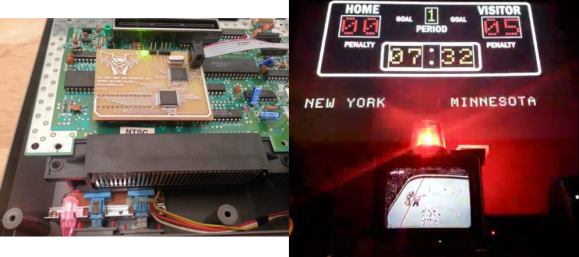Making microcontrollers produce video has long been a staple of hardware hacking, but as the resolution goes up, it becomes a struggle for less capable silicon. To get higher resolution VGA from an Arduino, [Marcin Chwedczuk] has produced perhaps the most bulletproof solution, to create dual-port RAM with the help of a static RAM chip and a set of 74-series bus transceivers, and let a hardware VGA interface take care of the display. Yes, it’s not a microcontroller doing VGA, but standalone VGA for microcontrollers.
Dual-port memory is a special type of memory with two interfaces than can independently be used to access the contents. It’s not cheap when bought in integrated form, so seeing someone making a substitute with off-the-shelf parts is certainly worth a second look. The bus transceivers are in effect bus-width latches, and each one hangs on to the state while the RAM chip services each in turn. The video card part is relatively straightforward, a set of 74 chips which produce the timings and step through the addresses, and a shift register to push out simple black or white pixel data as a rudimentary video stream. We remember these types of circuits being used back in the days of home made video terminals, and here in 2024 they still work fine.
The display this thing produces isn’t the most impressive picture, but it is VGA, and it does work. We can see this circuit being of interest to plenty of other projects having less capable processing power, in fact we’d say the challenge should lie in how low you can go if all you need is the capacity to talk 74-series logic levels.
Interested in 74-series VGA cards? This isn’t the first we’ve seen.













